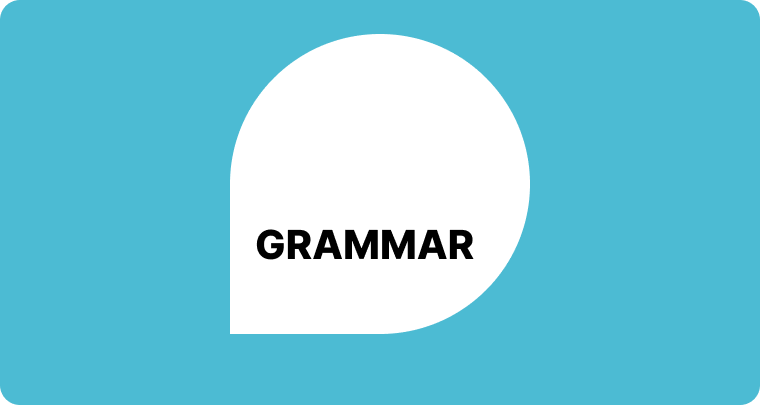
Understanding Parts of Speech
When you come across a verb that ends in “s”—such as dances, fries, or feels—you’re seeing it in a conjugated (or inflected) form. In English, regular verbs form the third-person singular simple-present tense by adding -s or -es to their base form.
In this guide, we’ll explore verbs that end in “s,” their grammatical function, and how to use them properly.
What Are Verbs That End in “S”?
In English, when a regular verb is conjugated in the third-person singular simple-present tense, it takes an -s ending. However, if the verb ends in ch, s, sh, x, or z, it instead takes an -es ending.
Examples:
Ahmet cooks really well.
He knows exactly which ingredients to use.
The tree near our subway stop loses its leaves earlier than the others.
The extension cord reaches across the room.
Verb Conjugation and the Role of “-S”
Verbs play multiple roles in a sentence. Besides describing an action or state of being, they also provide information about time, conditions, and the subject.
Verb conjugation refers to how verbs change form based on properties like number, person, tense, voice, and mood. When a verb takes an -s ending, it signifies:
Number: Singular
Person: Third person
Tense: Simple present
(Additionally, it is typically indicative in mood and active in voice, but those aspects are less critical in this discussion.)
Understanding Third-Person Singular in the Simple Present Tense
Among all regular verb conjugations in English, only the third-person singular simple-present form visibly changes by adding -s or -es.
Example:
She sometimes wishes she had moved to a different neighborhood.
Here, wishes matches the third-person singular subject (she), and the action (wishing) is ongoing or habitual, requiring the present tense.
If the subject is a noun instead of a pronoun, the verb still follows the same pattern:
Luna sometimes wishes she had moved to a different neighborhood.
Other present-tense forms of the verb remain unchanged:
I wish
We wish
You wish
They wish
Similarly, in the past tense, the verb does not change based on person or number:
I wished
He/she/it wished
They wished
This makes the third-person singular simple-present tense unique because it is the only conjugation that adds -s.
Exceptions to the Rule
Irregular Verbs
Most irregular verbs still follow the -s rule in the simple present. While their past-tense and past-participle forms may be irregular, they still take -s in the third-person singular simple-present form.
For example:
give → gives
take → takes
A small group of verbs, including have, do, and go, are irregular in the third-person singular present tense:
Pronoun Have Do Go
I have do go
We have do go
You have do go
He/She/It has does goes
They have do go
Among all English verbs, “to be” is the most irregular, changing forms even outside the third-person singular:
I am
We are
You are
He/she/it is
They are
Singular “They” Exception
When they is used as a singular pronoun, the verb does not take -s, despite referring to a single person.
Examples:
They hope their class schedule improves this semester.
They enjoy going for a run every afternoon.
Just like you, the singular they always pairs with plural verb forms.
Subject-Verb Agreement
Verb conjugation helps ensure that the verb matches the subject in both person and number, a concept known as subject-verb agreement.
Examples:
The list I’m looking at includes both names and addresses.
Canada observes Boxing Day as a public holiday.
She removes her shoes before entering her apartment.
All the subjects here (list, Canada, she) are singular and require a third-person singular verb.
A Common Mistake to Avoid
A key point to remember: when a singular noun is the subject, it does not end in -s, even though the verb does.
Examples:
Singular: The store opens at ten o’clock.
Plural: Both stores open at ten o’clock.
Singular: The hen pecks at the corncob.
Plural: The hens peck at the corncob.
To ensure proper agreement, remember that when a verb ends in -s, its singular subject does not.
Examples of Regular Verbs That End in “-S”
There are thousands of regular verbs in English that form their third-person singular simple-present tense by adding -s:
to disappear → disappears
to float → floats
to request → requests
to fasten → fastens
to wait → waits
to care → cares
to protect → protects
Frequently Asked Questions (FAQs)
What are verbs that end in “-s”?
They are regular verbs conjugated in the third-person singular simple-present tense.
What is verb conjugation, and how does it relate to verbs ending in “-s”?
Verb conjugation is how verbs change form based on properties like number, person, and tense. A verb with an -s ending indicates that it is singular in number, third person in person, and present in tense.

Geri bildirim: Underused & Regional Idioms: Meanings, Origins, and Daily Usage
Yorumlar kapalı.